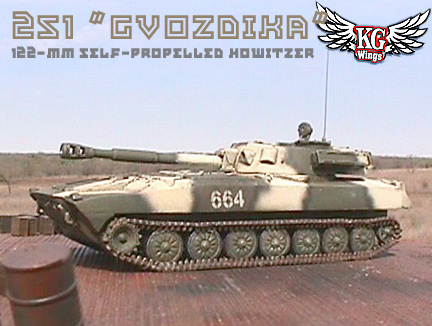 |
| The 2S1 Gvozdika is a Soviet 122-mm self-propelled howitzer based on a modified MT-LB chassis. Although officially designated SO-122 it is more commonly known as the Gvozdika ("Carnation") for the shape of the fireball it creates when firing rounds. |
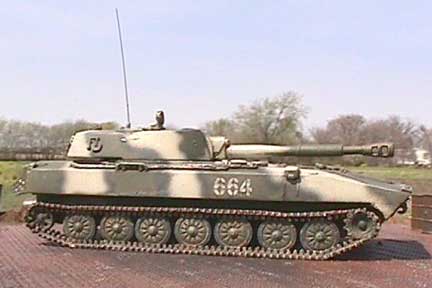 |
| The Gvozdika was first seen in public at a Polish Army parade in 1974 and deployed in large numbers (72 per tank division, 36 per motorized rifle division). It's been involved in combat in the second Chechen War, both Gulf Wars, the Kosovo War and the 2008 South Ossetia war. |
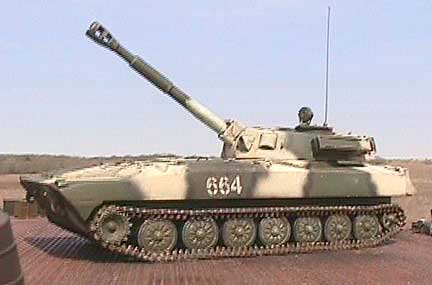 |
| Tracked and amphibious, the 2S1 has the cross-country capability necessary to keep pace with supported BMPs and tanks. It has a maximum range of 15,300 meters and is also used extensively in a direct fire role against armored vehicles and to breach minefields and other obstacles. |
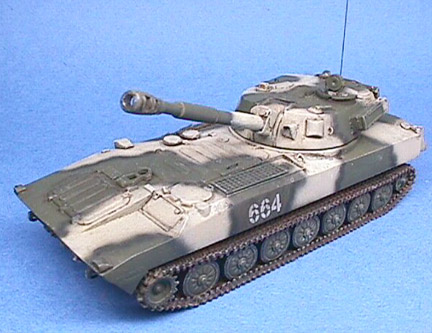 |
| The 2S1 is fully amphibious with very little preparation, and is propelled in the water by its tracks. A variety of wider tracks are also available to allow the 2S1 to operate in snow or swamp conditions. It is NBC protected and has infra-red night-vision capability. |
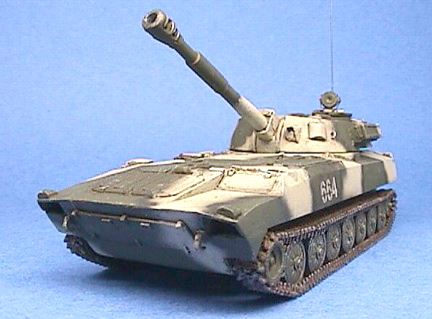 |
| It's relatively light weight of less than 16 tons enables it to operate in swamps and deep snow and also contributes to its amphibious capability. It's suspension can be lowered to enhance it's already low profile for easy air-lifting. |
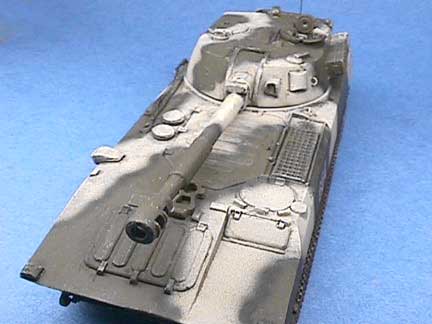 |
| The 2S1 carries 40 rounds of 122-mm projectiles normally 32 are HE, six smoke and two HEAT-FS. It has a maximum sustained rate of fire of 5 to 8 rds/min. with a maximum range of fire between 15.3 to 21.9 km depending on the type of round. |
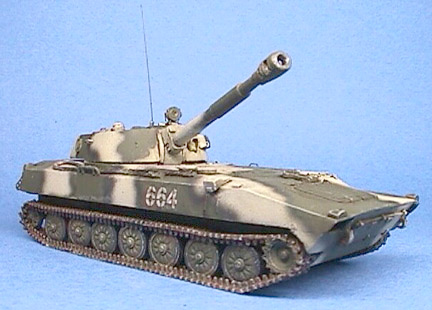 |
| This is a very typical ACE kit - a short run kit that requires quite a bit of cleanup and careful fitting, but the end result is a rare subject handled in a very accurate way. |
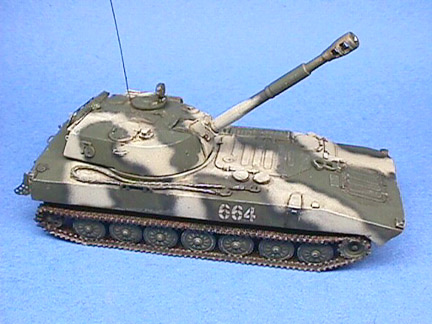 |
| Tow cable eyelets are provided but no cable. I used stranded wire to finish it out and was pleased with the way it turned out. |
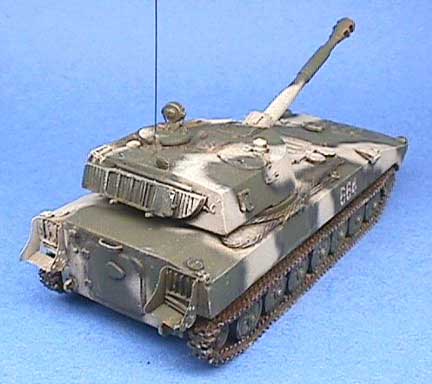 |
| The amphibious floats and "swim fenders" can be stored at the rear of the turret and hull. Photo etched parts are provided to really spice this area up. |
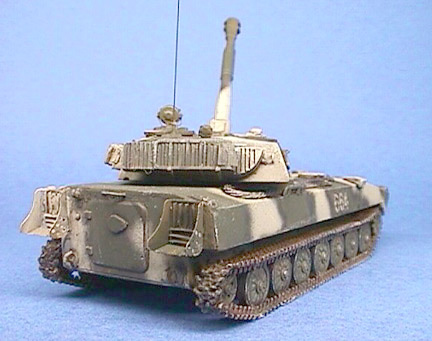 |
| Ammunition would normally be used from outside and fed to the crew inside via the rear door. The projectiles would be fused before being passed into the vehicle. |
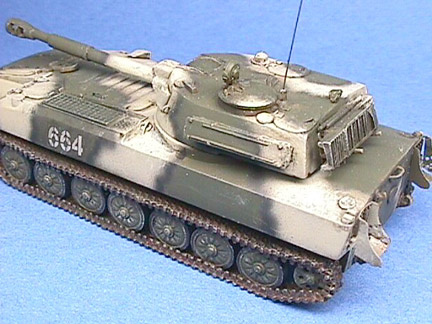 |
| I painted the camouflage pattern freehand this time (with the airbrush) and got a little more over spray than I would like. I'll probably go back to masking next time. |
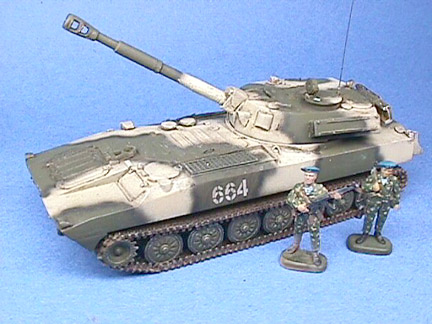 |
| Here I'm using a couple of ESCI Spetnatz troops to illustrate the low profile of the 2S1. It is surprisingly small after recently building a PZH 2000. |
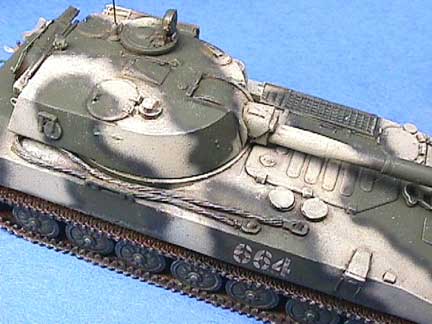 |
| The details are a bit soft but with a little weathering they stand out fairly well. |
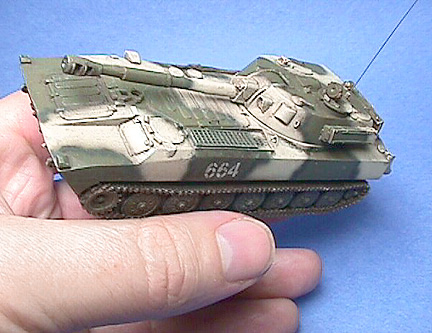 |
| I'm really very happy with this kit. It turned out really well and all the extra work test fitting, sanding and filling were well worth the effort. With no other injection molded 2S1 available this is the best and ONLY choice! Good job ACE. |
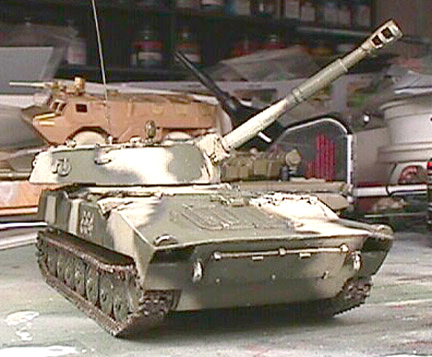 |
| Here's my 2S1 sitting on the workbench about to receive a few final touch-ups. Note the partially completed VAB in the background. |
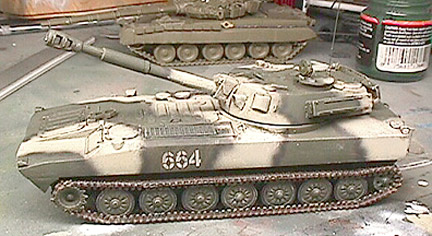 |
| Another workbench photo with an unpainted Revell T-80 in the background. |
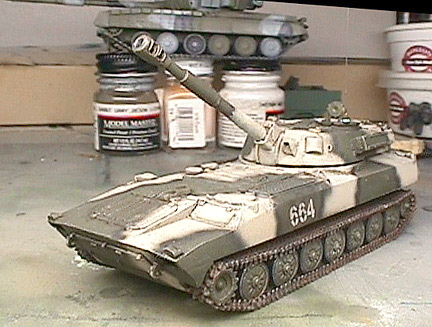 |
| A few days later I declared this kit finished, meanwhile the T-80 was nearly finished. |
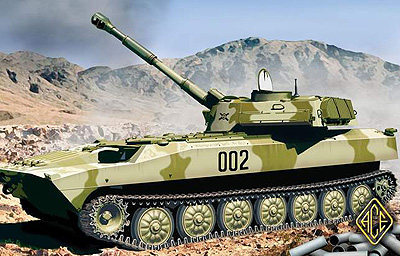 |

Kit: ACE # 72121 |

Scale: 1/72 |
Value:
Retail is about $16.00 (US) at time of writing, 2009. This is comparable to most armor kits in this scale. |
Assembly:
The kit consists of 138 plastic parts on four sprues molded in white, 17 photo etched parts on one sheet, one decal sheet and a one-page front and back instruction sheet.
This is a limited run kit so cleanup is required on most every part. There are no location pins so alignment can be tricky and careful sanding and filling is required throughout assembly. Details are a little soft but reasonably good and accurate for the most part. Dental tools can come in handy, especially if you have shaky hands or fat fingers. You can find them online or just ask your local dentist Philadelphia if you can buy some of his.
The tracks
are molded in separate-links which require tedious clean up and careful alignment. The end result is still much better looking than rubber or vinyl band-type tracks because you can create the proper "sag".
All hatches are molded shut, gun barrel can elevate and turret can rotate. Parts and instructions are provided to rig the vehicle for amphibious swim.
Assembly is straightforward and logical except my instruction sheet had the light housing parts #49 incorrectly labeled as parts #19.
The basic hull is broken down into about a dozen parts. Careful sanding and filling is required to get it aligned correctly. The turret ring has to be carefully sanded and opened up to allow the turret to fit.
|
Decals:
Decals are provided for: 201 Division Russian Army Tajik-Afghan border 1994, Pridnestrovia Guards Bendery 1992, Soviet Army Guard, Polish Army, Finland and Soviet Naval Infantry. |
Customizations:
I used stranded electrical wire for the tow cable. Stretched sprue was used to create the aerial. Transparent pearlized sequins were used for vision blocks. Hand-holds were created with small gauge wire. |
Recommendation:
Adjusting and patching poor fitting parts will be frustrating for a beginner.
I recommend this kit for more experienced modelers. |